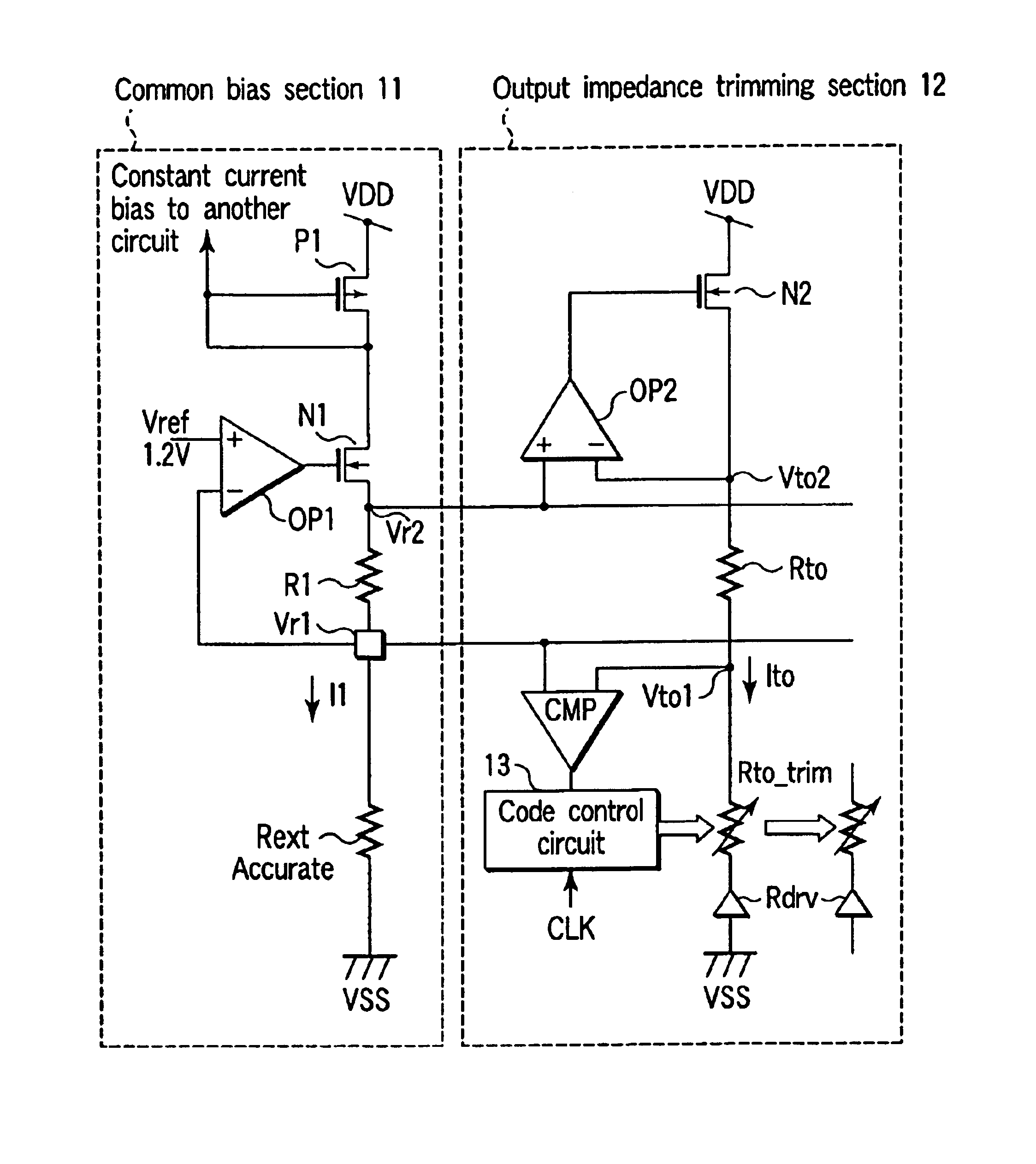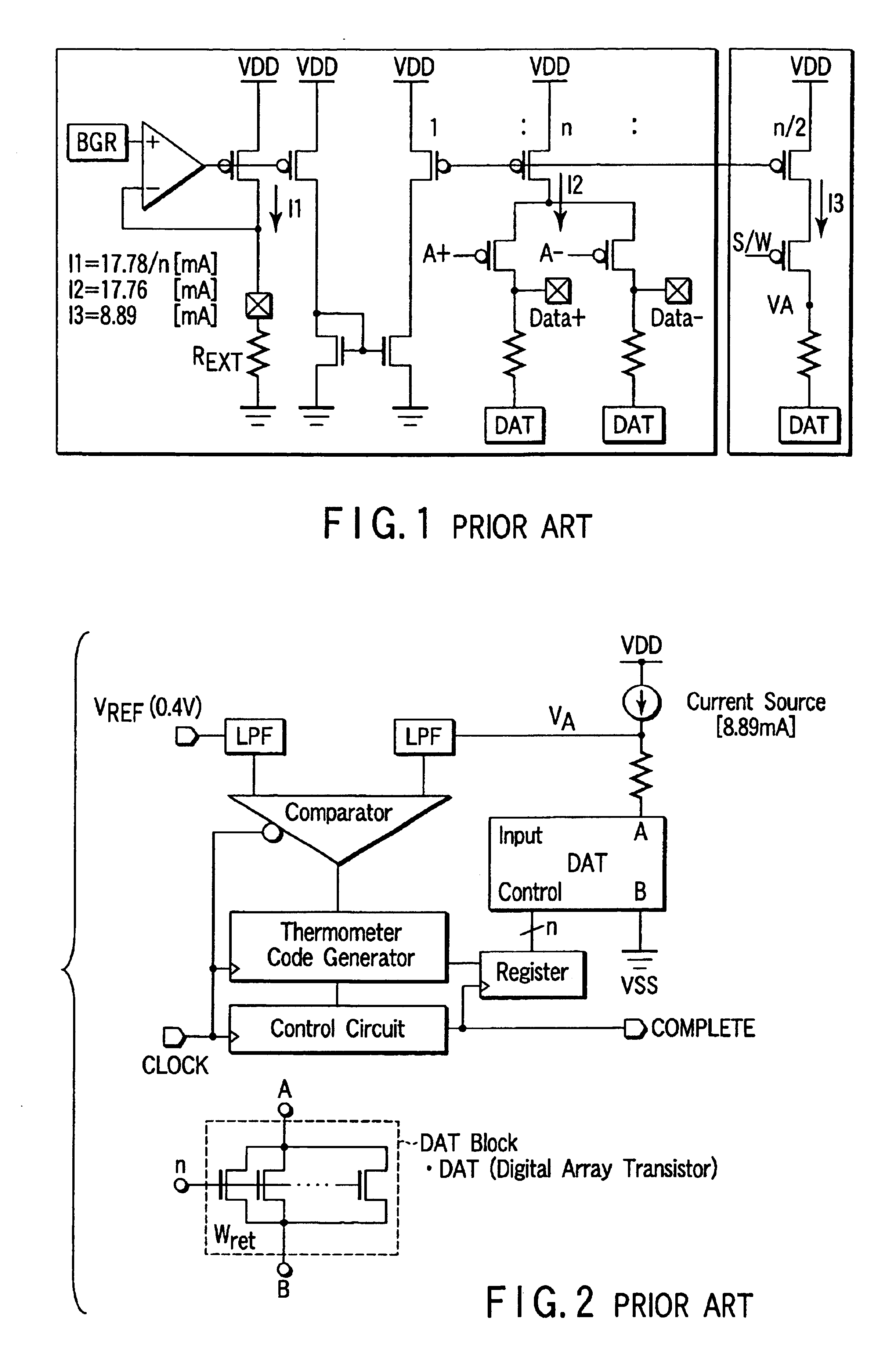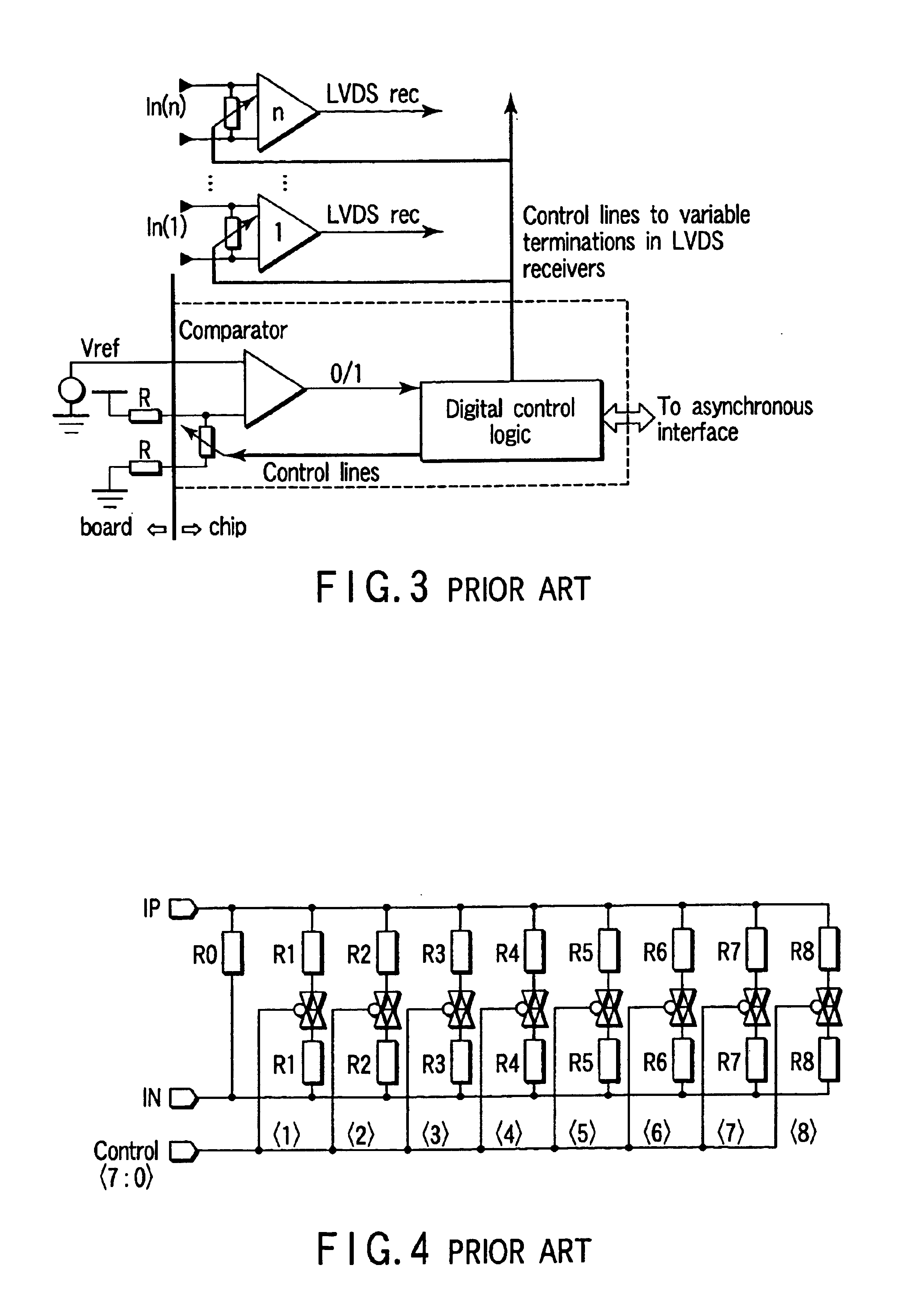Impedance trimming circuit
- Summary
- Abstract
- Description
- Claims
- Application Information
AI Technical Summary
Problems solved by technology
Method used
Image
Examples
example 2
(3) Example 2 of the circuit
FIG. 28 shows example 2 of the impedance trimming circuit according to the ninth embodiment of the present invention.
The impedance trimming circuit provided as example 2 is an input impedance trimming circuit. This circuit does not need the driver dummy resistor or the driver, and merely performs trimming of the resistor, and adjusts the input impedance by using the obtained code, unlike the above output impedance trimming circuit.
Except the above points, an input impedance trimming circuit 14 does not greatly differ from the output impedance trimming section 12 shown in FIG. 22. Further, a code flattening circuit 16' of a code flattening section 15' is the same as the code flattening circuit 16 of the code flattening section 15 in FIG. 22.
first embodiment
The operation of the above input impedance trimming circuit is the same as that of the impedance trimming circuit and its explanation will be omitted.
example 3
(4) Example 3 of the circuit
FIG. 29 shows example 3 of the impedance trimming circuit according to the ninth embodiment of the present invention.
The impedance trimming circuit provided as example 3 is an input / output impedance trimming circuit. This circuit includes an output impedance trimming section 12 and an input impedance trimming section 14. In this case, a common bias section 11 is shared with the input impedance trimming section 12 and the output impedance trimming section 14.
The output impedance trimming section 12 and the code flattening section 15 are the same as the output impedance trimming section 12 and code flattering section 15 shown in FIG. 22. The input: impedance trimming section 14 and the code flattening section 15' are the same as the input impedance trimming section 14 and code flattening section 15' shown in FIG. 28.
The operation of the input / output impedance trimming circuit is the same as that of the impedance trimming circuit according to the first embod...
PUM
 Login to View More
Login to View More Abstract
Description
Claims
Application Information
 Login to View More
Login to View More - R&D
- Intellectual Property
- Life Sciences
- Materials
- Tech Scout
- Unparalleled Data Quality
- Higher Quality Content
- 60% Fewer Hallucinations
Browse by: Latest US Patents, China's latest patents, Technical Efficacy Thesaurus, Application Domain, Technology Topic, Popular Technical Reports.
© 2025 PatSnap. All rights reserved.Legal|Privacy policy|Modern Slavery Act Transparency Statement|Sitemap|About US| Contact US: help@patsnap.com



